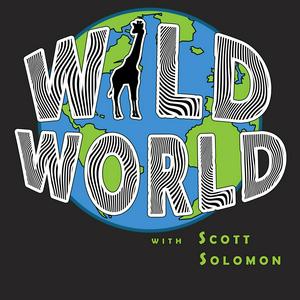There are more than 1,500 active volcanoes on Earth. But rather than being spread evenly across the planet, they tend to be clustered in particular locations. A cluster of active volcanoes occurs in east Africa, in what’s known as the Great Rift Valley, which runs through the continent of Africa from Ethiopia in the north to Mozambique in the south. Like other places where volcanoes are clustered, such as the Pacific Ring of Fire, the Great Rift Valley is a place where the boundaries between Earth’s tectonic plates meet. In some places, like the Andes of South America, the plates are moving toward one another, causing one plate to be forced below the other, which leads to the formation of tall mountains as the plates buckle and fold. But in East Africa, the plates are moving away from one another. In the gap between them, depressions are created that form large valleys, or lakes as water accumulates. But in a few spots, the separation of these massive plates creates an opening where magma from deeper in the Earth can make its way up to the surface. Where that happens, you get a volcano.Dr. Kayla Iocovino is a geoscientist who has studied volcanoes all over the world. She has a Bachelor’s degree in geology from Arizona State University and a Ph.D. from Cambridge and her current position is Senior Research Scientist at NASA’s Johnson Space Center in Houston. She has also done fieldwork in Antarctica, Costa Rica, Chile, Italy, North Korea, Ethiopia, and the Democratic Republic of the Congo. Her work has been featured on numerous documentaries, including a BBC documentary about her work in the Democratic Republic of the Congo. The DR Congo, or DRC, is the second largest country in Africa and is located in the center of the continent. The Congo river flows through it, surrounded by the world’s second largest rainforest. The eastern edge of the country, near the border with Uganda and Rwanda, has rugged mountains. This is where the country’s two active volcanoes are located, Nyiragongo and Nyamulagira. In 2002, an eruption of Nyiragongo devastated the nearby city of Goma. Kayla Iocovino was part of the research team that visited these mountains along with the BBC film crew. I watched the documentary and my jaw was on the floor when I saw how Kayla and her team literally rappelled down into the crater of Nyiragongo, at the bottom of which was a massive lava lake– the largest in the world. To learn more about Kayla Iocovino’s research on volcanoes, visit her website: https://www.kaylaiacovino.com. Did you know Wild World has a merch shop? You can get a T-shirt, coffee mug, or hat to show your support of the podcast. You can find it here: https://www.wildworldshow.com/ Wild World is produced by 3WireCreative.Help support this podcast and future episodes by checking out Autio, the perfect travel companion app for more engaging road trips.
